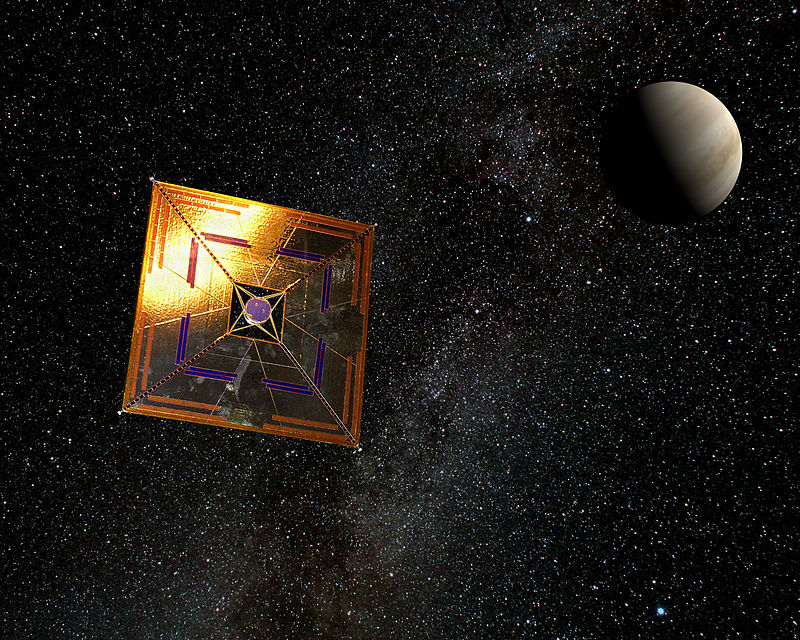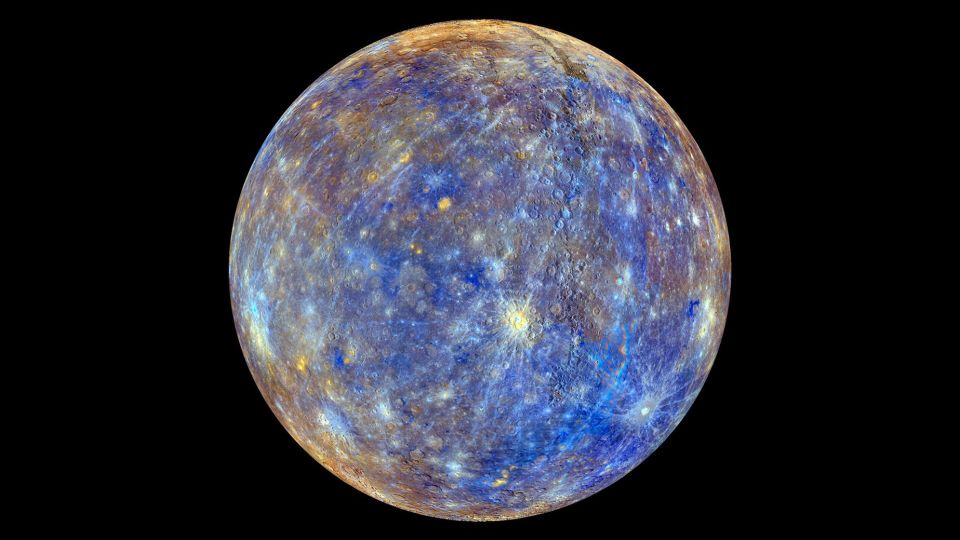For centuries, humanity has dreamed of sailing across the vast ocean of space, propelled not by conventional engines, but by the very force of light itself. This is no longer the realm of pure science fiction. Solar sails—spacecraft that harness the gentle but relentless pressure of sunlight—represent one of the most elegant and potentially revolutionary methods of deep-space propulsion. Unlike chemical rockets that burn fuel in a furious blaze, solar sails move silently, propelled by nothing but photons.
This concept, once considered purely theoretical, is now being tested in the real world, and it could be the key to reaching distant planets, stars, and even other galaxies. But how do solar sails work? What are their limitations and possibilities? And could they be the future of space exploration? Let’s set sail on an intellectual journey to explore the science, history, and future of solar sails.
The Science Behind Solar Sails
How Light Pushes a Spacecraft
At first glance, the idea of using sunlight to propel a spacecraft seems counterintuitive. After all, light has no mass. How can it exert force?
The answer lies in the nature of photons—tiny packets of energy that make up light. While photons have no mass, they do carry momentum. When they strike a surface, they transfer a minuscule amount of that momentum to it. If the surface is reflective, the photon bounces off, imparting twice as much momentum.
In everyday life, the force exerted by light is negligible. However, in the vacuum of space, with no air resistance or friction, even the tiny push from photons can gradually accelerate a spacecraft to incredible speeds. Unlike traditional rockets, which burn fuel and eventually run out of thrust, solar sails continue to gain speed as long as they are exposed to sunlight.
Sailing in Space
A solar sail functions much like a sailing ship on Earth, but instead of wind, it catches the momentum of photons. The sail itself is typically made of an ultra-thin, highly reflective material, such as Mylar or Kapton, coated with a metallic film like aluminum. These materials must be both lightweight and durable to withstand the harsh conditions of space.
The sail’s orientation relative to the Sun determines its trajectory. Angling the sail can change the direction of travel, much like a sailor adjusting a ship’s sails to catch the wind at different angles. By carefully controlling its position, a solar sail can “tack” through space, navigating across the solar system and beyond.
Acceleration and Speed
Since the force from sunlight is incredibly weak, a solar sail starts moving very slowly. However, because there is no resistance in space, the acceleration is continuous. Over time, a solar sail can reach tremendous speeds—far greater than what chemical rockets can achieve.
For example, a well-designed solar sail could theoretically reach speeds of tens of thousands of kilometers per hour. Given enough time, a solar sail could even approach a significant fraction of the speed of light, making it an ideal propulsion system for long-duration interstellar missions.
The History of Solar Sails: From Theory to Reality
Early Visions of Light Propulsion
The concept of solar sailing dates back more than a century. In 1865, Jules Verne speculated about using light pressure for propulsion in his novel From the Earth to the Moon. However, it was Russian scientist Pyotr Lebedev who first demonstrated that light exerted pressure on surfaces in laboratory experiments in 1900.
In the 1920s, Konstantin Tsiolkovsky, the father of modern rocketry, and his protégé Friedrich Zander proposed the idea of using solar sails for interplanetary travel. In the 1970s, the idea gained traction when NASA and other space agencies began studying solar sails as a potential means of propulsion.
The First Solar Sail Missions
While the idea remained theoretical for decades, the 21st century has seen real-world tests of solar sail technology:
- IKAROS (2010): The first successful solar sail mission, Japan’s IKAROS (Interplanetary Kite-craft Accelerated by Radiation Of the Sun), deployed a 14-meter sail and demonstrated controlled solar sailing for the first time.
- LightSail 1 & 2 (2015-2019): Funded by The Planetary Society, LightSail 1 and LightSail 2 proved that solar sails could maneuver in space using only sunlight, marking an important milestone for solar sail technology.
- NEA Scout (2022): NASA launched the Near-Earth Asteroid Scout, a solar sail mission designed to explore a small asteroid.
Each of these missions has brought solar sails closer to becoming a mainstream propulsion method for deep-space travel.
Advantages of Solar Sailing
Infinite Propulsion Without Fuel
Traditional spacecraft rely on fuel, which limits their range and mission duration. Once a rocket burns through its fuel, it can no longer accelerate. Solar sails, however, do not require any onboard fuel. As long as they remain exposed to light, they continue to gain momentum.
Interstellar Potential
Because they can theoretically reach a significant fraction of the speed of light, solar sails are one of the most promising technologies for interstellar travel. A mission to Alpha Centauri—the closest star system—would take tens of thousands of years with conventional rockets. But a solar sail, equipped with additional propulsion from powerful laser beams, could potentially make the journey in just a few decades.
Cost-Effective Exploration
Solar sails eliminate the need for massive fuel tanks and complex propulsion systems, making them lighter and cheaper than conventional spacecraft. This could open the door to a new era of low-cost space exploration, allowing probes to be sent to multiple planets, moons, and even beyond the solar system.
Challenges and Limitations of Solar Sails
Slow Initial Acceleration
Solar sails start moving very slowly, which makes them impractical for missions requiring rapid acceleration. This means they are not suitable for launch from Earth’s surface—they must be deployed in space, often by a conventional rocket.
Size and Fragility
To capture enough sunlight for propulsion, solar sails need to be enormous. A typical sail might be hundreds or even thousands of square meters in size. These vast, ultra-thin structures are vulnerable to tears from micrometeoroids and other space debris.
Limited Maneuverability
Unlike chemical rockets, which can generate thrust in any direction instantly, solar sails require careful, gradual adjustments to change course. This makes them unsuitable for certain types of missions, such as landing on planets.
The Future of Solar Sailing: Where Do We Go Next?
Laser-Driven Light Sails
One of the most exciting future applications of solar sailing involves lasers. Instead of relying solely on sunlight, a powerful laser beam from Earth or space could be used to push a sail at much greater speeds. This concept is the basis of Breakthrough Starshot, an ambitious project aiming to send a fleet of tiny, ultra-light solar sails to Alpha Centauri within a human lifetime.
Hybrid Solar Sails
Scientists are also exploring hybrid propulsion systems, combining solar sails with electric or ion propulsion. This could allow spacecraft to use sunlight for primary thrust while using small thrusters for fine-tuned maneuvering.
Exploring the Outer Solar System and Beyond
Solar sails are ideal for deep-space exploration. Future missions could use solar sails to:
- Study the Kuiper Belt and Oort Cloud.
- Explore exoplanets by sending small probes beyond the solar system.
- Deploy massive, kilometer-wide sails for intergalactic exploration.
Conclusion: The Dawn of a New Era in Space Travel
Solar sails represent one of the most promising propulsion systems for the future of space exploration. Their ability to travel without fuel, accelerate indefinitely, and reach interstellar speeds makes them a game-changing technology. While challenges remain, ongoing research and real-world tests suggest that solar sailing could one day revolutionize our ability to explore the cosmos.
The idea of sailing through space, carried by the gentle push of sunlight, is no longer just a dream. It is becoming a reality—one that could take humanity farther than ever before, into the vast unknown of the universe.
And so, as we unfurl our sails and set course for the stars, we embark on a journey unlike any other—a journey powered by nothing more than light itself.






